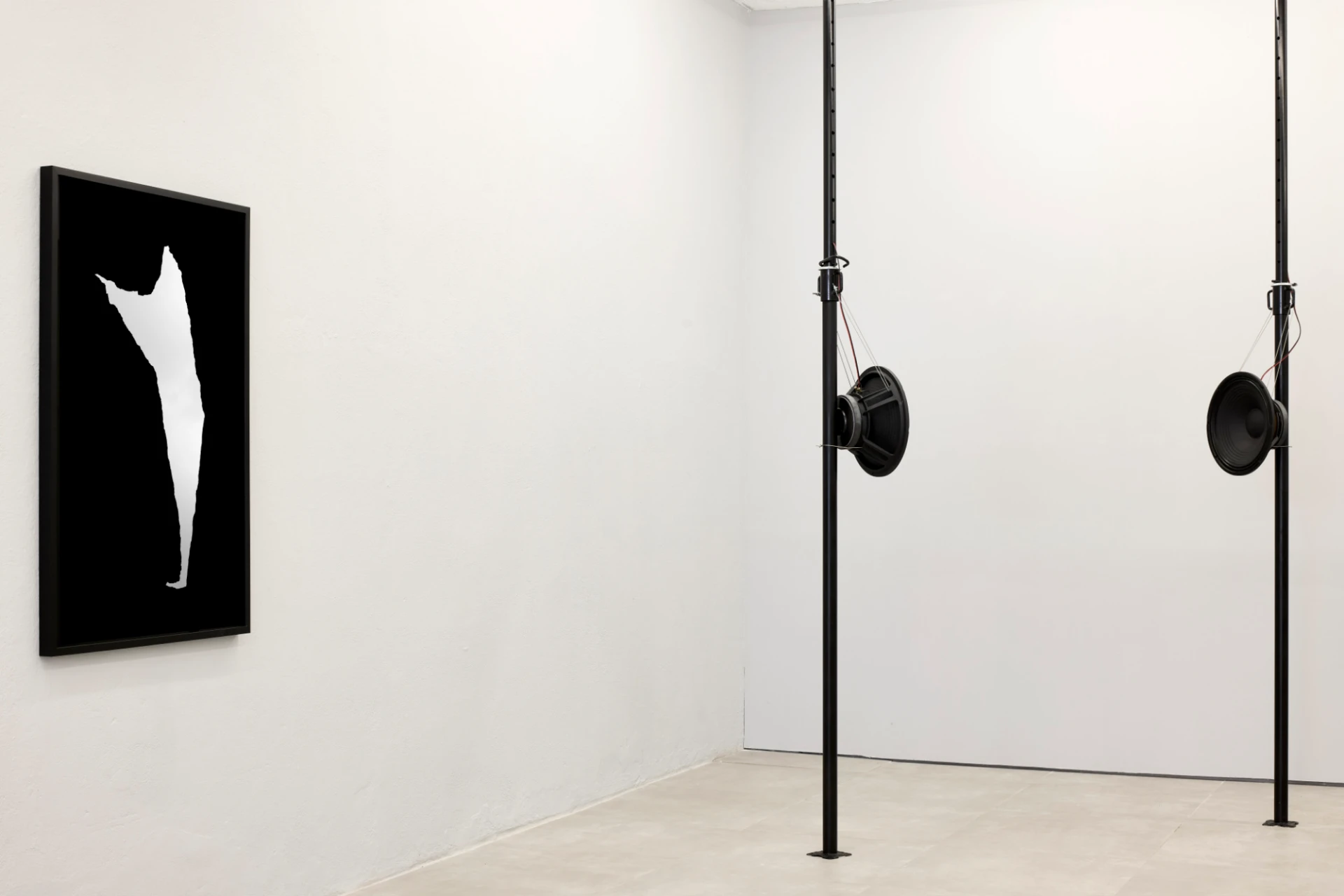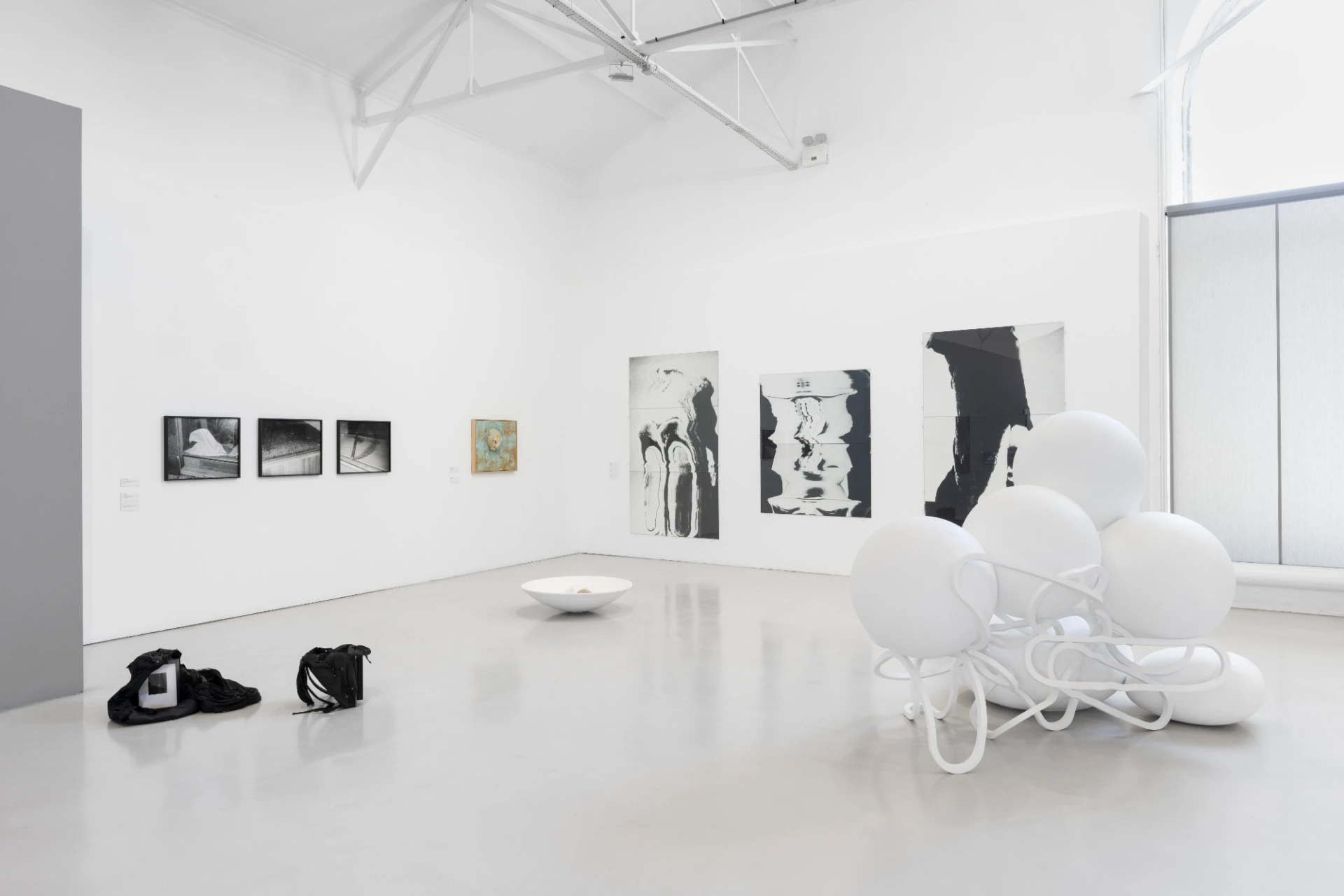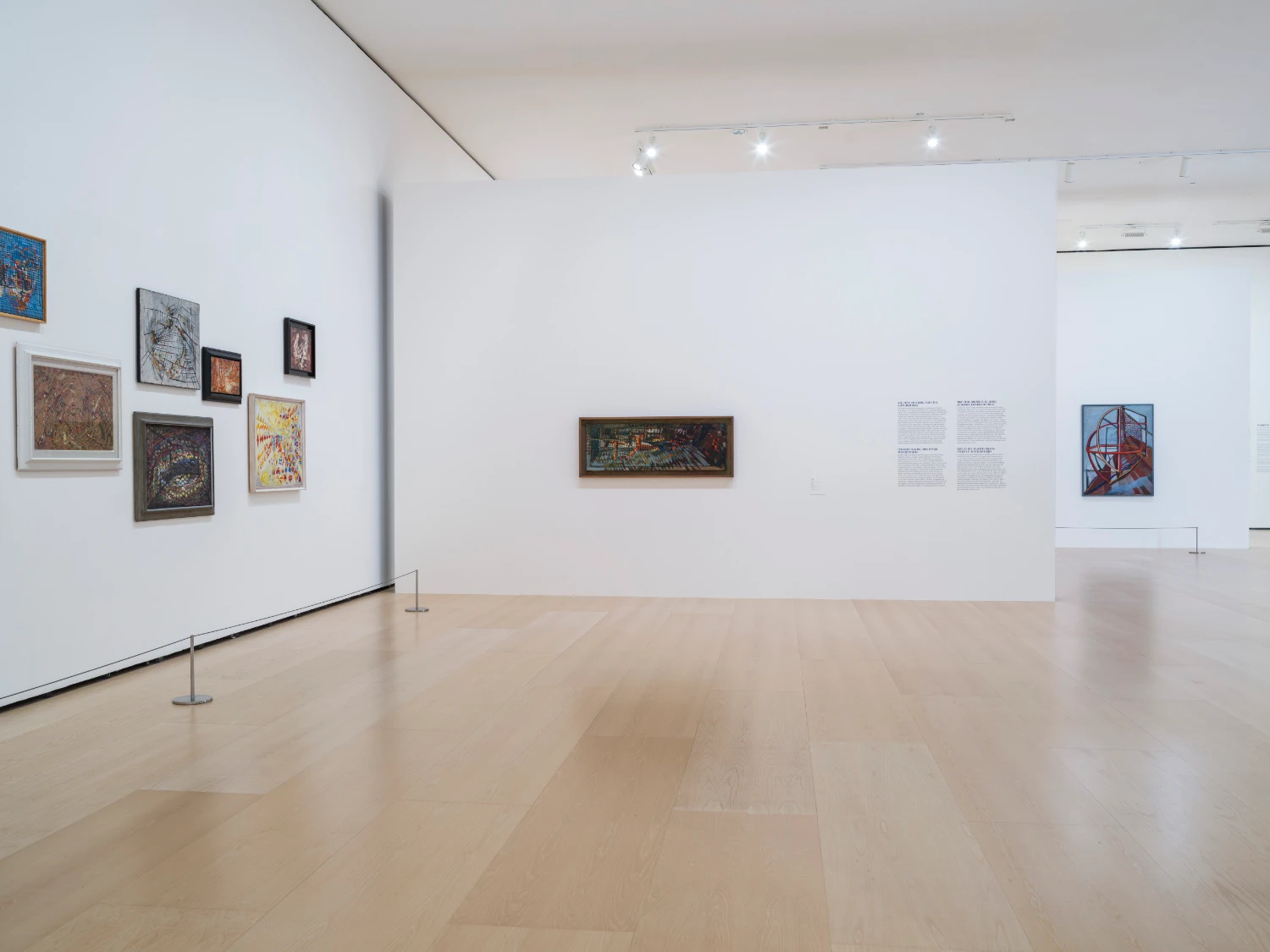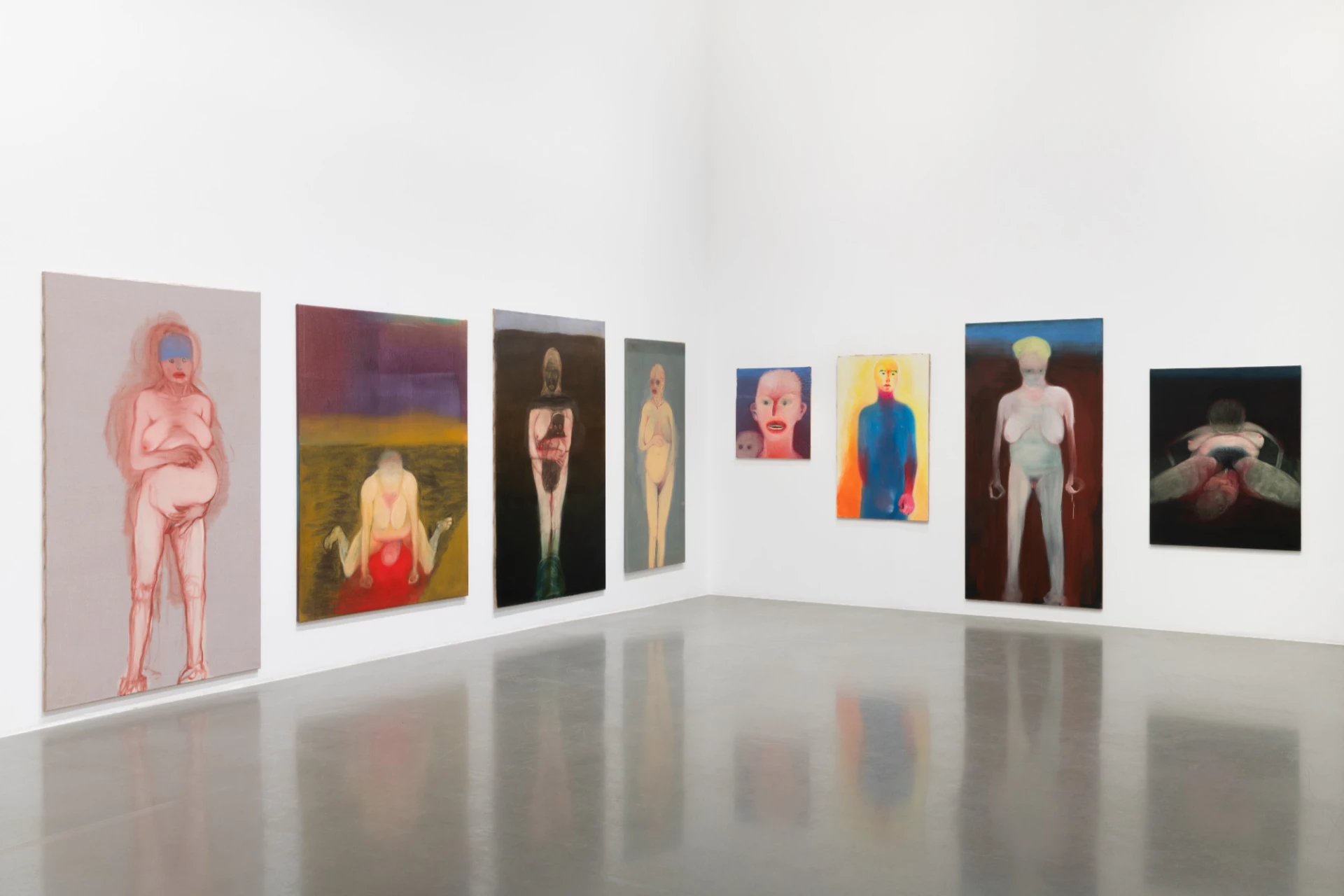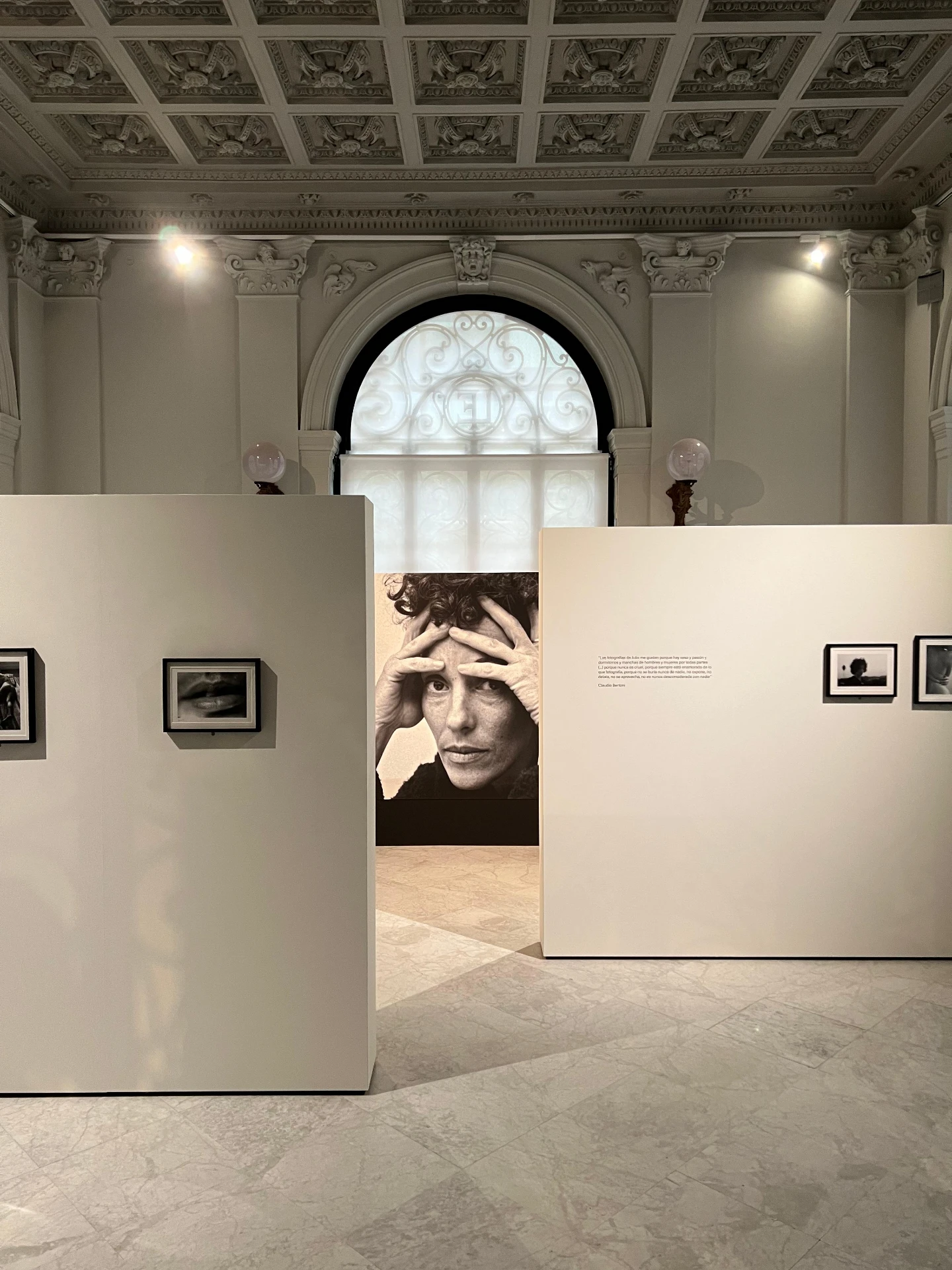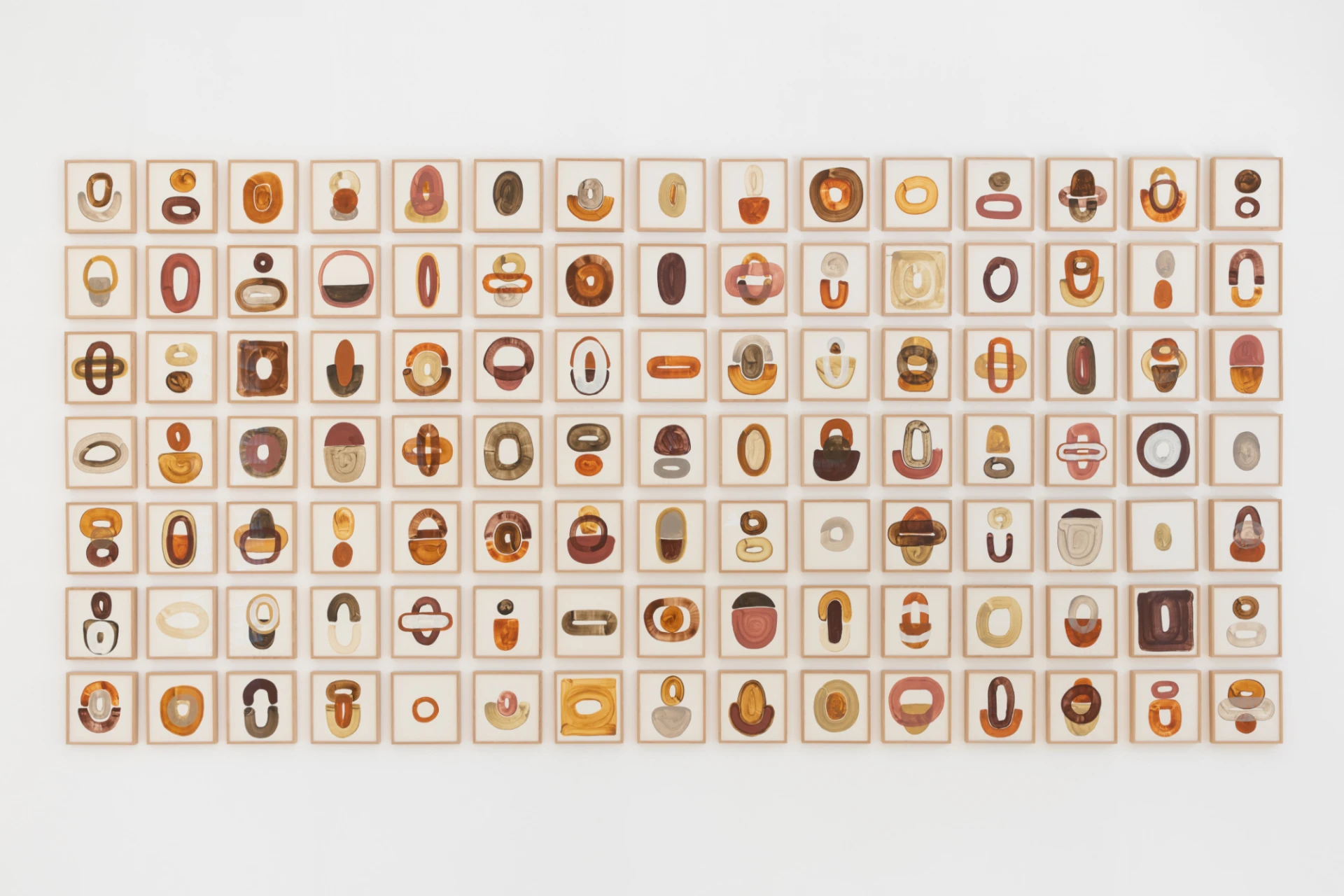Maria Inês Mendes: You studied sculpture, but the works you have been developing, particularly those you showed me at MAC/CCB South Garage and the piece that was presented at the "ENQUANTO ISSO//MEANWHILE" exhibition at MNAC, are very much two-dimensional. Drawing is a relatively recent addition to your artistic practice. Why did you feel the need to move away from sculpture and ceramics, from three-dimensionality? How does drawing fit into your artistic practice?
Marta Castelo: My practice of drawing on paper is indeed relatively recent. I started making my first drawings on paper in 2019. However, my interest and desire to work with drawing arose in 2015. I didn't think of this foray into drawing as a departure from sculpture, but always as an addition, as something that could add meaning to it. At the time, in 2015, I was interested in understanding clay and how it is understood in the sculptural tradition. Clay is usually relegated to an early stage of the process, closely linked to the artist's initial ideas. It is a transitional material and, therefore, not highly valued. I was reading a book on sculpture models when I came across a quote from Winckelmann that said something like: "modelling in clay is to the sculptor as drawing is to the painter". Regardless of the reservations this phrase may raise, this comparison between drawing and modelling in clay resonated with me in a very particular way. So I started wanting to draw with clay. I began modelling clay using the roller technique, typical of ceramics, always in analogy with the line of drawing. During this process, a new language emerged, very different from anything I had done before: much more gestural and also much more intuitive. In 2015, I created many clay models using the clay roller, which originated from my practice of drawing, and which I consider to be true drawings. In this case, the drawing comes from a direct relationship with sculpture; it is born from it and is therefore not a deviation. Later, in 2019, I moved on to paper and started drawing with clay paints. There was a kind of transfer of the language that I had assembled three-dimensionally onto paper. And I feel that there is something of modelling here – a brushstroke marked by the gesture that models the form and which, therefore, ends up having a sculptural value. In the case of the drawings on paper, which I recently showed at MNAC, I would say that there is a certain centrality. And, curiously, I have been told that these drawings resemble the circularity of a potter's wheel.
MM: And this sculptural component also seems to be reflected in the way you think about space. The drawings I saw at MAC/CCB are all related to each other and end up constructing an object that goes beyond the limits of their two-dimensionality.
MC: Yes, of course. We are talking about a set of drawings that I developed in the context of a residency with the Coletivo Guarda Rios, and which are on display in the South Garage of MAC/CCB Architecture Centre. Here, the drawing was installed in a much more spatial way than in other works I have developed. Still concerning your last question... I think that drawing and sculpture are in constant interplay, influencing each other. They are inseparable.
MM: You always work with clay. Do you feel that this interest stems from your background in sculpture, which inclines you towards a more material dimension? Why do you choose to work with clay?
MC: Sculpture essentially works with matter and with space, which in itself is also matter. Therefore, I believe that my studies in sculpture have certainly influenced my interest in the materiality of things. I find it interesting that you ask why clay. In fact, clay was not a choice. During my studies, I worked with many materials such as plaster, metal, stone and ceramics. When I started working with ceramics, there was a very natural and immediate reaction. It was all a matter of circumstance: I went to Berlin for Erasmus and all my colleagues were working with this material. But I feel that all this was a process. At the time, I was working with clay, but I always fired it, and fired clay is already ceramics, which is a kind of survival or death of clay. Clay itself is a very living, very transformable and impermanent material. I felt that ceramics was a very fixed and stable form, and that created some doubts in me. That's why I started working with wet slabs to create some deformation, to allow the clay to say something about itself in some way. And this was a long process of de-formalising the object, an attempt to reach an understanding of clay prior to any technological dimension. There I found precisely this multiplicity, this impermanence, these multiple states that clay can contain. I am interested in working with this material because it is alive and, from a symbolic point of view, it is also quite rich.
MM: Beyond this mutability of clay, are you interested in mapping the territory by working with a material that is taken from the earth?
MC: Although I use clay that I collect in nature, I don't see the theme of territory in my work, but rather the theme of construction, which I understand as culture. I am not interested in construction associated with the discipline of architecture, but rather linked to the transformation of things by Man. I see construction not as a building, but as something immaterial that constitutes culture. I think this is where I place my work. And it is through clay that I seek to understand humans in relationship with their surroundings. I don't like to think of a divide between man and nature. Any division between nature and culture is impossible to sustain, because man is nature, although we usually forget about that. I do not consider it healthy to insist on this division between nature and culture, which reduces nature to a lifeless matter. This does not mean that I do not think about these issues or have not felt the need to think about them from the perspective of clay. But I do not see these instances as separate, and I believe that insisting on this separation can be a reason for much destruction. I prefer to think about the connection between things, about what connects us to other beings. Clay has a historical role and mythological background, which makes me believe that it is a privileged material for thinking about these issues, not as opposition, but precisely to dilute barriers. In various creation myths, clay is the material from which we are made and to which we return when we die. This mythological evidence tells us that we are by nature fertile, plastic and malleable, but also vulnerable. We must learn to take better care of our vulnerability and that of others. We cannot let the clay that constitutes us dry out; we must keep alive that plasticity that characterises us.
MM: The installation "Escrita da Cidade", presented at the "Mater" exhibition, leads me to think about paths and flow, which seem to be central to your artistic practice. If in your last drawings we see the course of a river, here we see a map of a city. What is your relationship with the idea of flow? Are we looking at a map of a specific territory?
MC: The idea of flow is evident in some of my drawings, quite clearly, for example, in those drawings in CCB, and also in the first drawings I made, which remain practically unpublished. These works are linked to the flow of bodies and, at the same time, to something in latency. In the installation ‘A Escrita da Cidade’ (The Writing of the City), the idea of a path is inherent to the demarcation and creation of space, the relationship with the body, and also with drawing. When I went to the exhibition space, I hadn't yet defined the place of things. It was in a process of drawing with bricks that I found the space for the installation and built the space for people to circulate. I think it is inherent to sculpture to create space to be occupied, to be lived in. And in that sense, I believe the idea of path and flow refers us to the very nature of sculpture. This is not a specific territory. It was a map that emerged in the process of drawing with the body and with the space during the exhibition's assembly period, which lasted about three weeks. The only plan I had was a desire to have something that identified a watercourse. I wanted to show bricks being broken down by the passage of water. And the installation has all that.
MM: The piece "Tabuinha da Escrita", also presented in this exhibition, reminds me of an 'ancestral making' that you mentioned earlier and which, in a way, seems to sum up part of your practice. Can you elaborate on this idea?
MC: I wouldn't say that my practice boils down to ancestral craftsmanship. Ceramic technology is very old, and the way I work with clay and ceramics - mostly without glaze, and valuing the porous texture of terracotta and low-temperature clays - harks back to an immemorial time. When I think about the relationship between nature and culture, it is inevitable to try to find answers in the past that can shed light on these relationships. And without intending to provide answers, I am interested in the emergence of man himself, agriculture, cities and writing. Interestingly, writing also appeared in my work when I began to test the relationship between drawing and clay. I made a tablet without realising I was going to do so and only recognised it later. And that sparked other interests, namely an interest in writing, which I understand as a coded form of drawing. I relate writing to drawing, and so the "Tabuinha da Escrita" is born out of this relationship with drawing and with something that emerged thousands of years ago and still marks our existence today.
MM: Finally, I ask: What other projects are coming up?
MC: I essentially have two works in preparation. In September, I will participate in a collective exhibition on the occasion of the 30th anniversary of the Jorge Vieira Museum, organised by the Beja City Council, and, also in Alentejo, I will participate with a performance at the Fidanc International Contemporary Dance Festival – FIDANC, which has been held in the city of Évora since 1998 and is curated by Rafael Leitão and Flávio Rodrigues. I don't know exactly when yet, but I will also be going to São Tomé and Príncipe for a residency to prepare a work for the Biennial to be held next year, in 2026.
